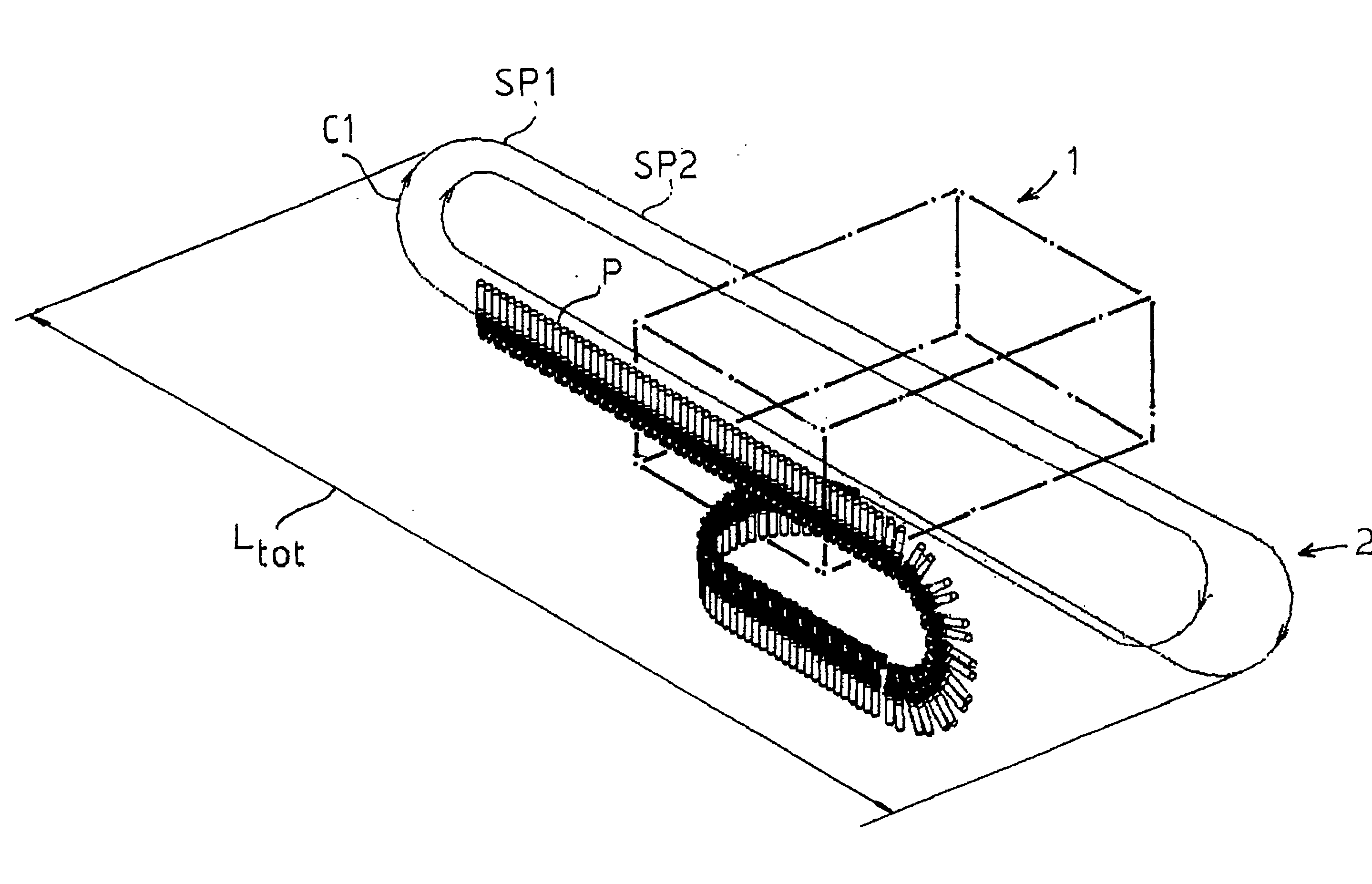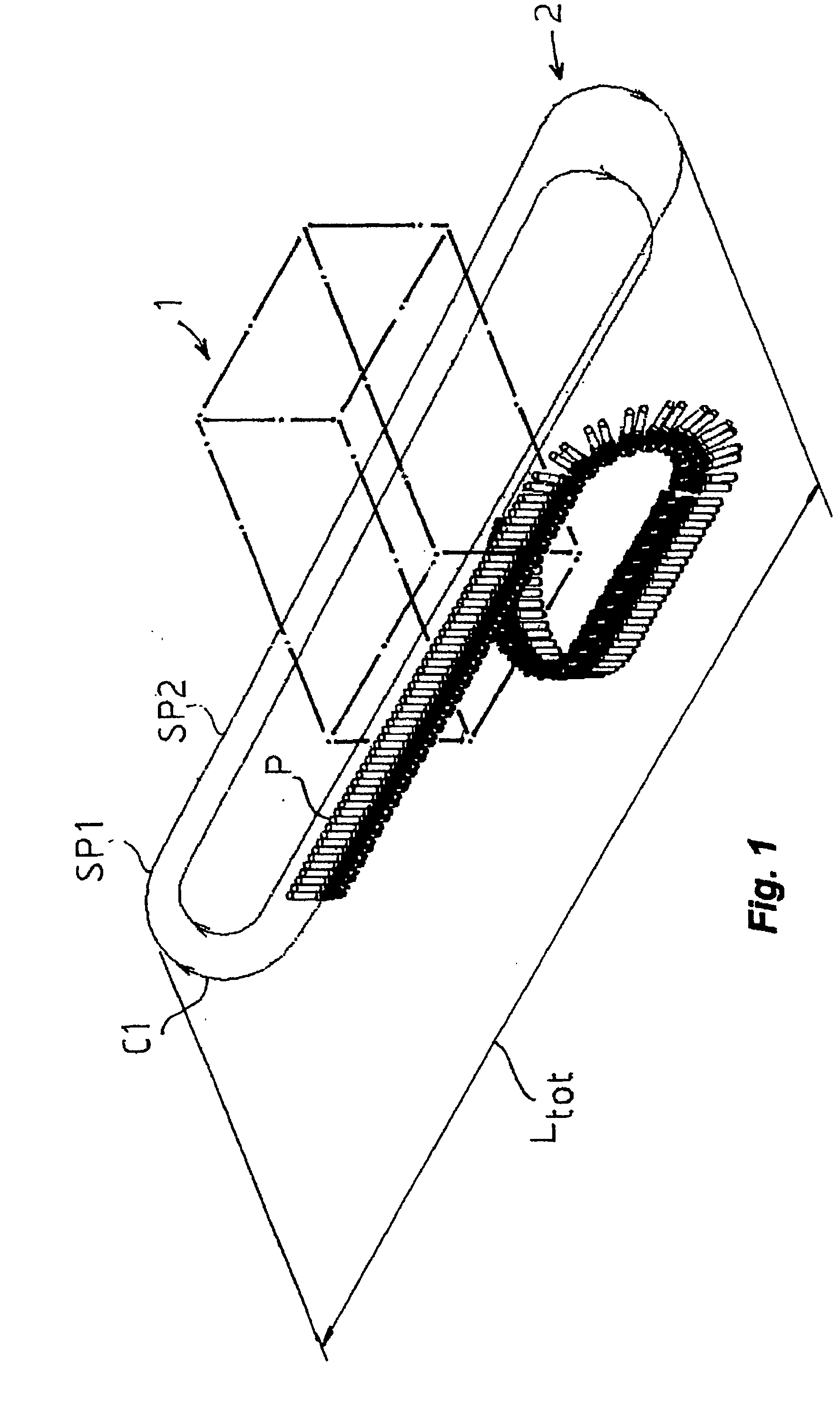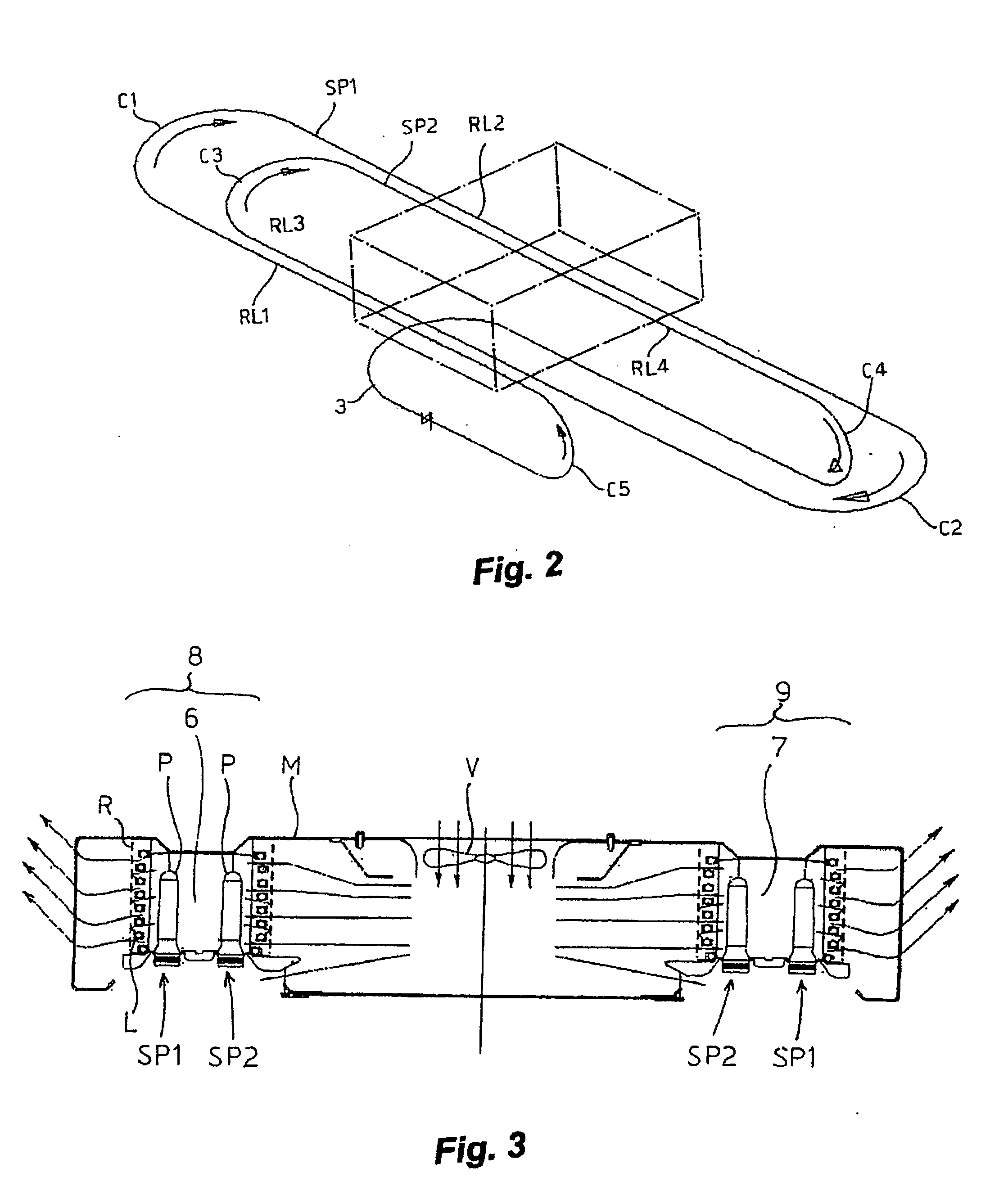Plant and Method for Thermally Conditioning Plastic Items
a technology of thermal conditioning and plastic items, applied in the field of plants and a method for thermal conditioning plastic items, can solve the problem that plants must have limited dimensions
- Summary
- Abstract
- Description
- Claims
- Application Information
AI Technical Summary
Benefits of technology
Problems solved by technology
Method used
Image
Examples
example
[0055] To illustrate this invention better, an example is given with numerical data relating to a plant realized by the Applicant in accordance with the version of the invention shown in FIGS. 1-4.
[0056] In said plant, the chain conveyor 2 forms a path with two spirals SP1, SP2 entering and exiting—as in FIG. 2—a single furnace 1 four times. The fact that the two chain spirals SP1, SP2 pass in two ducts 8, 9 reduces the thermal losses of the furnace, bringing its thermal efficiency—defined as the relation between the thermal energy required to bring a certain quantity of preforms from the starting temperature to the desired temperature, and the energy consumed by the furnace—indicatively, up to approximately 21-28%, against 15-20% for known types of infrared furnaces for example, a furnace of the type described in W00149075 with only one duct. The greater efficiency of the furnace made it possible to realize the total path of the preforms in front of the IR lamps approximately 0.7 ...
PUM
| Property | Measurement | Unit |
|---|---|---|
| Length | aaaaa | aaaaa |
| Dimension | aaaaa | aaaaa |
Abstract
Description
Claims
Application Information
 Login to View More
Login to View More - R&D
- Intellectual Property
- Life Sciences
- Materials
- Tech Scout
- Unparalleled Data Quality
- Higher Quality Content
- 60% Fewer Hallucinations
Browse by: Latest US Patents, China's latest patents, Technical Efficacy Thesaurus, Application Domain, Technology Topic, Popular Technical Reports.
© 2025 PatSnap. All rights reserved.Legal|Privacy policy|Modern Slavery Act Transparency Statement|Sitemap|About US| Contact US: help@patsnap.com



